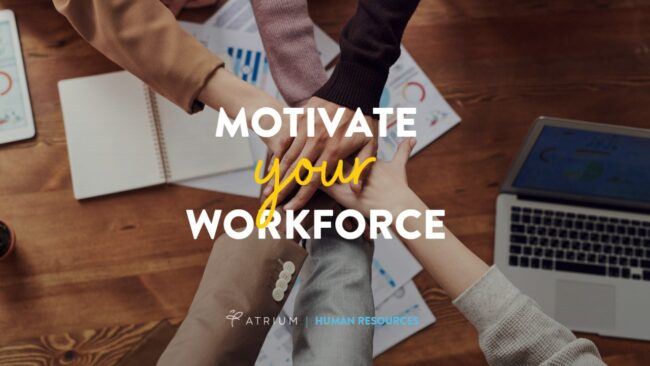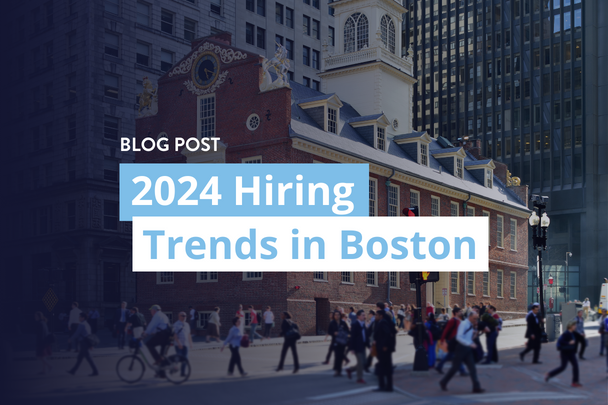“Summertime, and the livins easy.” Despite the nostalgia of this lyric (courtesy of my Janis Joplin playlist), life is anything but easy right now. Summertime or not, employee motivation is at a critical low. With increased anxiety, burnout, turnover and absenteeism in the workforce, some organizations are relying on their corporate rulebook to return business to “usual.” However, today’s talent is rejecting the status quo. Even the most decorated gymnast in the world, Simone Biles, is prioritizing her mental wellbeing over her trade.
Today’s job seekers are seeking flexibility and trust. Microsoft cites that 41% of the global workforce is positioned to leave their jobs, before the end of this year. The numbers are so staggering, it’s been labeled the Great Resignation. Whether or not you believe the projected turnover is a threat to Corporate America, one thing is clear. The talent landscape is changing. So are the rules!
What’s Motivating Corporate Policy?
If you set forth Return to Office guidelines, you may see some pushback. Perhaps you’ve already assessed the risk to attrition rates and are willing to accept cost of hiring + rehiring. Regardless, it’s important to pay attention to how people are feeling. If employee motivation is lacking, there might be a few rules that need to bend.
Employee motivation and corporate policy may seem unrelated. Whether for safety, productivity, or the bottom line, rules exist to protect and serve us. Unfortunately, restrictions can put a damper on employee morale. Let’s face it. How often does policy inspire anyone? If you want to motivate your workforce, find out what’s driving your corporate playbook. When you place employees at the wheel, you win favor. However, business needs to benefit, too. It is possible to implement rules that support employers and employees. It takes a balanced corporate mindset. With strategy, people skills and luck, your business can communicate flexibility and trust to reinforce healthy boundaries for both.
How to Win Employee Motivation
Whether trading stock, playing monopoly, or making business and hiring decisions, there are a few things you can rely on to maximize your “winning” potential amid the unknowns. The hiring competition is steep. If you play your cards right, there are significant gains to be had! Don’t let policy detract your workforce potential. You can optimize productivity, connection, and innovation by elasticizing some of the rules. For a new perspective, there are 3 views that could use reframing.
1. Business Benefits When We Calculate Risk Anticipate Reward
There are many vulnerabilities to consider when operating a business, especially when it comes to the people who power it. Often, businesses create controls to mitigate perceived threats. However, it’s important to carefully evaluate the motivation behind any new or evolving controls. Since the unknowns tend to manifest fear, it’s easy to feel intimidated. Don’t forget. Risk can transform into reward, especially when well-calculated. To plan for positive workforce outcomes, start naming your fears. For example, if the fear of disengagement and lost productivity is keeping you from empowering autonomy within your workforce, play through a few worst-case scenarios in your mind. Some of the common ones are increased attrition rates, lost productivity, service limitations, and/or ambiguous corporate culture. Not that you need anyone to tell you this, but your concerns are legitimate.
Anything that has the potential to restrict revenue is not good for business. However, unnecessary or rigid rules can also limit your workforce potential. That hurts the bottom line, too. When business policies don’t align with the ideals of your workforce, the people within it become demotivated. Get to know the people you manage. Then, consider what policies could lead them to better rewards. While guidelines must be fair for all, employee motivation improves when you leave a little wiggle room for individuality.
2. Invest in Digital Transformations Human Systems
Managers that eliminate and/or automate the mundane within a role can oversee more meaningful work, focus on relationships, and generate better outcomes. Software that frees employees from daunting task lists and repetitive work allows more time for strategic thinking, problem solving and professional development. Spreadsheets and presentations that keep employees in front of computer screens for long periods of time are especially tiresome. Try to find new ways to carry out these kinds of tasks. Alternately, schedule intentional breaks and/or rotate tedious tasks among team members to reduce the risk for burnout.
With the rapid adoption of all things digital, it’s important to also scale your human efforts. More than ever, the workforce needs effective communication and genuine connection. While digital tools can enable greater human efficiencies, they’re no substitute for people skills. With epic levels of burnout and discontent across all industries, today’s business policies must address the evolving needs of our human resources. To do so effectively, there are four digital pitfalls you must avoid.
(a.) Digital Oversight Transparency
When it comes to today’s talent, trust is one of the greatest motivations an employer can offer. If you must adopt supervisory tools to help manage your workforce, do so with sensitivity. It’s vital to be transparent about the technologies you are using. For the most effective messaging, lean on your Communications team and uphold change management best practices.
Remember, technology can’t know if an individual is struggling, personally or professionally. So wherever possible, pair human perspective with your digital tools. With compassionate leadership and a hands-on approach, performance evaluations and management decisions are better informed.
(b.) Collaboration Communication
Despite being designed to support communication and collaboration, digital tools can work against us. We must be careful not to induce collaboration overload. The truth is, too much togetherness also comes at a high cost to business. In fact, science tells us that collaboration kills creativity. Solitude is what actually fuels “out of the box” thinking and problem solving. To avoid “group think” and encourage more innovation, you need to place limits on the growing demand for collaboration in your organization. Don’t worry. I’m not adding an “I” to “TEAM.” With effective communication, you can reach your collaborative goals more efficiently.
Group discussions should benefit collective outcomes. If they serve individual or immaterial goals, you’re potentially over-collaborating. You can leverage surveys for feedback from a large population and share relevant group updates via email. Identify the stakeholders, influencers and decision makers. Meet separately, while keeping everyone updated along the way. Then, present your findings to the appropriate authority/ies for final determinations. For effective decision making, timely business outcomes, and less burnout, there must be limits on collaboration.
(c.) Productivity Tools
Whether in-office or not, you might be wondering if your employees are being as productive as they could be. It’s a common concern, especially for newly remote and hybrid work environments. However, too much technology can limit work outcomes. With an “always-on” company culture, you can inadvertently restrict meaningful work. Beyond that, overmanaging can cause your employees to disengage. It’s a careful balance. If you’re not seeing the desired business results, try to understand why.
Evaluations of worker activity must go beyond the obvious tasks at-hand. To understand the full scope of a role, measure the amount of time dedicated to email, chat applications, job-specific software, team meetings, and/or status updates. Is there time allotted for creative thought, process improvement, and other business developments? To improve your team’s productivity, they need downtime. If productivity is down, shift your focus from hours to outcomes.
(d.) Virtual Engagement Real Connection
You may find video meetings productive. They certainly can be! However, forced connection is more than just socially exhausting. There is a pandemic within the pandemic, and its known as Zoom Fatigue. Prolonged media access is shown to deteriorate long-term memory as well as intensify depression and anxiety. It can even limit our ability to differentiate important and unimportant interruptions.
While video conferencing is an effective way to communicate from a safe social distance, the demand for virtual interaction is causing unnecessary mental drain. It’s becoming increasingly important for employees to disconnect from technology throughout their day. To motivate employees, avoid the Zombie-esque work culture this phenomenon can create. Be intentional about virtual meetings. Don’t stack them too heavily and establish screen time boundaries for your workforce. Otherwise, you may short-circuit your humans.
A Few Healthful Meeting Tips:
- Allocate time for “virtual recovery” at the end of your video meetings (remind participants to stand-up, walk away from their screens, have a snack, stretch, hydrate, etc.).
- Send a daily reminder or block time in calendars for a fresh air break.
- Plan “no desk needed” meetings and encourage participants to get up and take a walk during long calls.
3. Remote/Hybrid Work Models Flexibility
People just aren’t powering down. As a result, workforce burnout is reaching universally critical levels. Frequently, employees feel guilty for taking paid time off (PTO). Even when they opt in, they’re unlikely to fully clock-out. More often than not, workers are checking emails and monitoring business developments while on “vacation.” Whether afraid to fall behind on work, miss a leadership discussion, or disappoint their high-achieving work culture, the end result labels us “A Nation in Need of Vacation.” There’s no way to improve employee motivation when people are burned out. To that end, companies are starting to mandate company-wide shut downs for more adequate reprieve. While large companies like Mozilla, Bumble, LinkedIn and Hootsuite are leading the employer trend, similar policies are likely to be adopted by small and mid-size employers in our near future.
Even if you can’t shut down business operations down, determine how you can offer flexibility. Remote, flexible, and hybrid work is being popularized. However, they don’t all translate to success. It’s important to be authentic. You don’t want to offer something that doesn’t work for your organization. If you decide to welcome remote or hybrid employees, having a manager dedicated to virtual worker can improve their experience. It can be a challenge to onboard and retain these employees, especially if it’s a change in culture. Be thoughtful about it. Facebook relies on a Director of Remote Work to support their remote employees. Consider how the talents of a Chief Hybrid Work Officer could benefit you and your teams.
If you’re feeling totally inflexible, it’s time to stretch. Zero-sum postures are unproductive. People are motivated when they feel accommodated. No matter how large or small, try to actualize your compassion. Can you loosen-up your Dress Policy? Would you consider offering some Work From Home (WFH) days throughout the year? If your employees aren’t taking PTO, can you incentivize them? Today’s talent is seeking more give. To attract and sustain the people you need on your team, give a little. Then, give a little more.
It’s important to acknowledge that work isn’t the only thing changing. Let’s be real. People are changing, too. Gallup polls report that worker quality of life declined during the pandemic. You can win the hearts and minds of top talent simply by offering compensation and benefits improve quality of life. To inspire employee motivation, work policies must be motivated by their needs.











